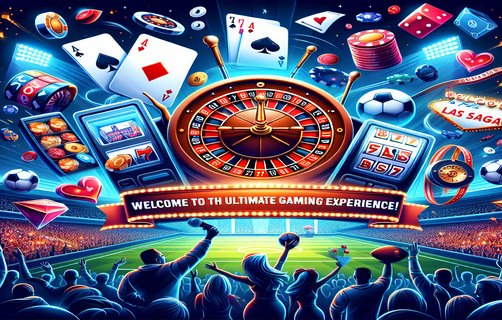The Psychology of Gain: Mastering High Volatility Poker Strategies in Sit and Go Tournaments
In the realm of online poker, especially in Sit and Go tournaments, understanding the dynamics of the game is crucial for success. With a focus on high volatility strategies, players can experience significant shifts in their chip stacks that mirror the psychological tension of gambling itself. This analysis aims to dissect the various elements involved, including player position, effective communication through phone support, the impact of casino updates, the influence of gambling influencers, and methods for exploiting less skilled players or "fish."
At its core, poker is a psychological battle, where a player's understanding of position can dictate not only their strategy but also their mindset. In a Sit and Go format, positions play a pivotal role in determining the way one approaches a hand. The player in the early position must consider a more conservative strategy, engaging primarily with premium hands. Conversely, in a late position, players have the advantage of observing their opponents' actions, allowing them to initiate bluffs or capitalize on weak reveals. Navigating these positions does not just require tactical acumen; it necessitates a strong psychological framework to remain confident while leveraging the information at hand.
High volatility in poker can be thrilling but also psychologically taxing. Players often ride the emotional rollercoaster associated with significant wins and devastating losses. This emotional engagement leads many to seek out phone support from casinos or professional players. Understanding the importance of mental well-being in high-stakes situations, established poker brands often provide reliable customer support that extends beyond technical issues—offering guidance on managing one’s emotional state during tournaments. By maintaining clear lines of communication, a player can mitigate stress, allowing focus to return to their game strategy.
Casinos continually update their platforms to accommodate the fast pace and needs of modern players. These updates can involve anything from gameplay mechanics to aesthetic overhauls. For players, staying abreast of these changes is critical; a well-informed player can exploit new features while others remain in the dark. Regular users may even feel a sense of belonging to a community marked by these changes, reinforcing positive psychological associations with their chosen platform and encouraging continued engagement.
As seasoned players know, a significant portion of the field in any Sit and Go consists of “fish”—those less adept individuals who contribute to the game's overall ecosystem. Identifying these players is an art form that involves keen observation of their betting patterns, emotional responses, and decision-making processes. Developing strategies to exploit their tendencies can lead to substantial profit margins. Engaging with a fish often requires an empathetic approach; understanding their psychological motivations—be it the thrill of the game or a casual night’s entertainment—enables a player to remain composed and focused, ultimately leading to a more advantageous position.

In conclusion, mastering the intricacies of high volatility Sit and Go tournaments requires more than just mathematical prowess—it demands a profound understanding of psychological elements at play. From assessing positional strength to harnessing influential communication, every aspect contributes to a player’s chance of success. By acknowledging these factors, players can enhance their strategies and navigate the ebb and flow of poker with greater confidence and clarity. Whether engaging with the lively online community or appropriating the idiosyncrasies of their opponents, a holistic view on the psychological underpinnings of the game will enable players to thrive in the unpredictable world of poker.

